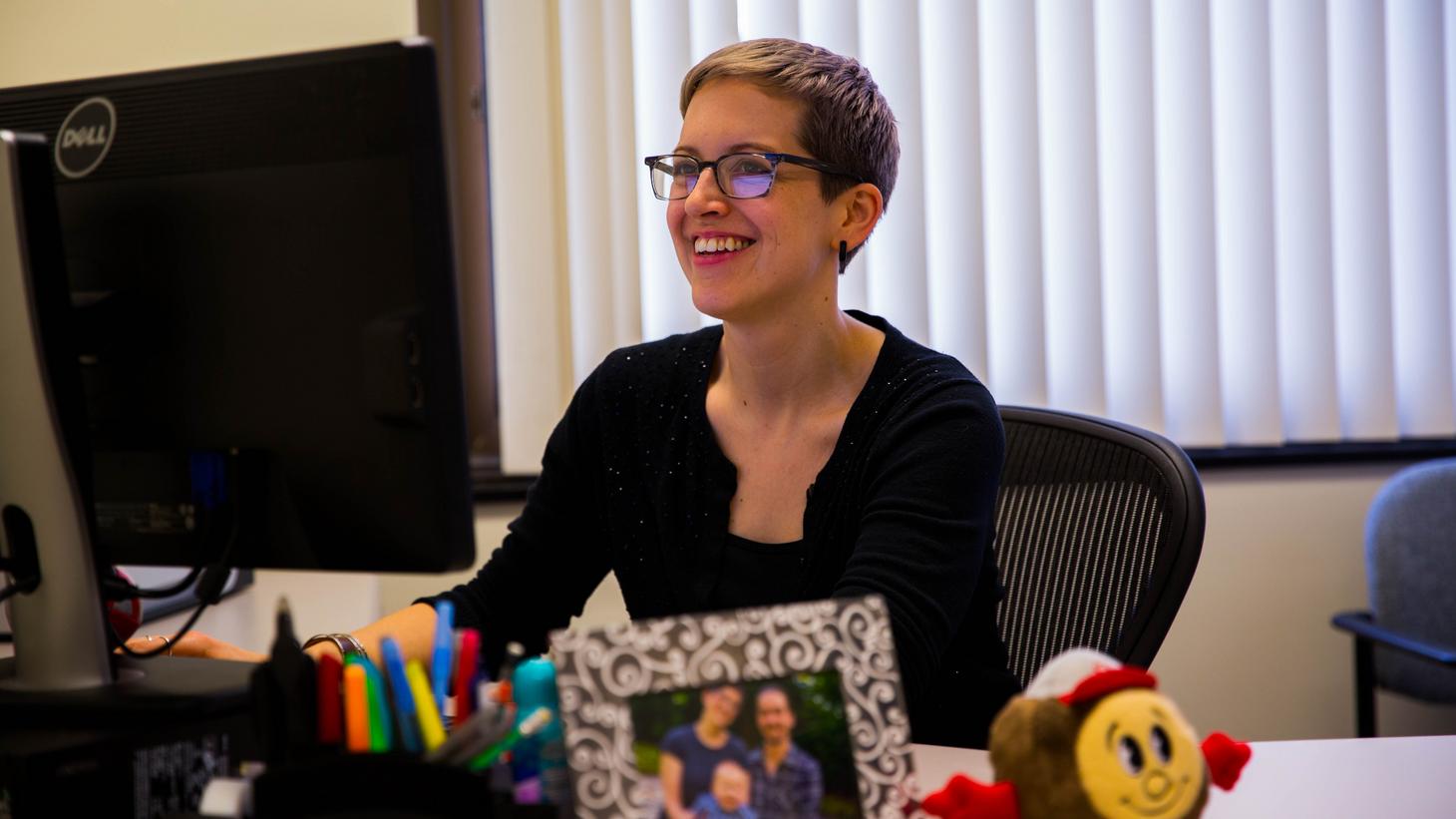
Game changer: the MHI degree
How an innovative new online master’s degree is changing minds and careers
By Joe Ashley
Although it is less than two years old, the College of Nursing’s new Master of Healthcare Innovation program is already having an impact. Just ask Vanessa Jamison, MHI, BSN, RN-BC, NE-BC, director of perioperative services at Ohio State’s Wexner Medical Center. “I’m a lot more open to exploring new ideas and doing something a different way,” Jamison said. “It really opened me up to seeing things more globally and understanding how healthcare can grow and adapt to improve services for patients.”
Jamison, who has been in her current position for three years, said she entered the MHI program because she wanted to learn more about leadership through an evidence-based perspective. Having worked at one place for her entire career, Jamison said, meant that she hadn’t had exposure to other organizations’ methods and best practices. Right from the start, Jamison said, she was able to use her MHI education at work. “I was excited to be able to come back from class the first semester and start doing things differently because of what I was learning. It was a new way of thinking, a new way of looking at healthcare.”
In August 2018, Jamison and six others became the first to receive the new MHI. Another member of the group is Allison Beedy, MHI, BSS, BSN, RN-BC, previously a cardiac catherization lab nurse at The Ohio State University Wexner Medical Center East. Beedy was named in December 2018 to the newly created position of clinic nurse manager of The Ohio State Total Health and Wellness Center at Ohio State East Hospital, a federally qualified health center (FQHC) led by advanced practice nurses that is operated by the College of Nursing.
Like Jamison, Beedy credits the MHI program with giving her a broader understanding of healthcare. “I felt like I knew where healthcare was going and what I wanted to do, but the program made me take a step back and examine it from a new mindset and new direction.” She said the MHI program helped prepare her for her clinical nurse manager position. “My responsibilities include managing the center’s daily operations, focusing on patient and employee satisfaction, and helping to grow the clinic and increase the number of patients. What I learned helps me communicate with staff and co-workers. I’m better at providing feedback and the coaching aspect of leadership.”
Emily Caudill, a member of the current MHI cohort who will graduate in May 2020, says that the program “has already helped me develop important leadership management skills and learn how to search for information to support the changes we want to make.” Caudill’s work as a business analyst on the Wexner Medical Center’s revenue cycle QA and training team involves ensuring the hospital is collecting accurate data from patients for insurance reimbursement purposes. The program also has given her “a bigger, global perspective of healthcare.”
Caudill’s desire to pursue a career “behind the scenes in healthcare” was sparked by her service in the Peace Corps in South Africa after earning a BS in health communication. Among the many things she has gained from the MHI program, she said, is an increased self-awareness. “I didn’t realize how much I would learn about myself in terms of my values and how they drive my leadership and actions. The program has also increased my understanding of other people, how they process information, and how to better communicate with them.” As a Buckeye Wellness Innovator, Caudill also helps increase wellness awareness and encourage healthy habits among her fellow staff members.
Michael Ackerman, DNS, RN, FCCM, FNAP, FAANP, professor of Clinical Nursing and director of the MHI program, isn’t surprised that students are able to quickly apply what they learn. “That’s how the program was designed,” he explained. “It’s very practice and real-world oriented. The curriculum was designed by people who are subject matter experts in innovation and leadership.”
The MHI program is taught totally online, allowing access to working professionals. Although students don’t meet physically on-site together in a classroom, Caudill, Beedy and Jamison said that the program’s synchronous classes and online connectivity still enabled them to get to know each other and feel as though they were part of a group. All three agreed they now have a deeper understanding of the role of innovation in healthcare and more confidence in their ability to positively impact healthcare with innovation and change. “I feel more secure about the future, no matter what happens in healthcare,” said Caudill. “The program enhances your ability to respond to whatever changes may lie ahead.”
